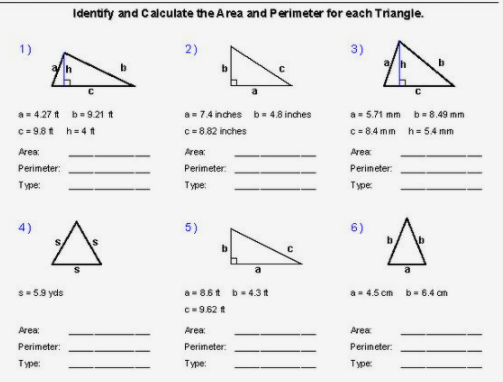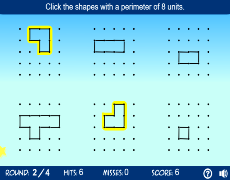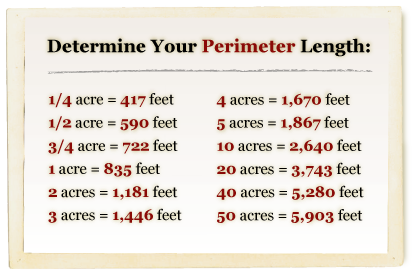Topic perimeter vs circumference: Explore the fundamental differences between perimeter and circumference, two crucial concepts in geometry. This article delves into their definitions, formulas, and real-world applications, ensuring a clear understanding of how they are used to measure various shapes. Whether you're a student or a math enthusiast, this guide will enhance your knowledge and skills.
Table of Content
Understanding Perimeter vs Circumference
When studying geometry, it's essential to distinguish between the terms "perimeter" and "circumference," as they apply to different types of shapes and have distinct methods of calculation.
Definitions
- Perimeter: The total distance around the boundary of a two-dimensional shape. It applies to polygons such as triangles, rectangles, and squares.
- Circumference: The distance around a circle. It specifically applies to circular shapes and is calculated using the mathematical constant π (pi).
Formulas
Here are the formulas to calculate the perimeter and circumference:
| Shape | Formula |
|---|---|
| Rectangle | Perimeter = 2(length + width) |
| Square | Perimeter = 4 × side |
| Triangle | Perimeter = sum of all sides |
| Circle | Circumference = 2πr (where r is the radius) |
Common Mistakes
- Using perimeter and circumference interchangeably. Remember, perimeter is for polygons, and circumference is for circles.
- Confusing units of measurement. Both perimeter and circumference should be measured in linear units such as meters, feet, or inches.
- Forgetting to include π when calculating the circumference of a circle.
Contextual Applications
- Construction: In building projects, the perimeter is used to measure the length of fences or walls around properties or gardens.
- Mathematics: Circumference calculations are essential for finding the length of circular objects or areas.
Examples
Let's look at a couple of examples to illustrate the differences:
- To find the perimeter of a rectangle with a length of 10 meters and a width of 5 meters:
Perimeter = 2(10 + 5) = 30 meters.
- To find the circumference of a circle with a radius of 7 meters:
Circumference = 2π × 7 ≈ 43.98 meters.
Conclusion
Understanding the difference between perimeter and circumference is crucial for accurate mathematical calculations and real-world applications. While the perimeter applies to various polygonal shapes, the circumference is specific to circles and involves the constant π.

READ MORE:
Introduction
The terms "perimeter" and "circumference" are often used in geometry to describe the measurement of distances around shapes, but they are not interchangeable. Perimeter refers to the total length around any polygon, while circumference specifically measures the distance around a circle. Understanding the differences between these two terms is essential for accurate mathematical calculations and real-world applications.
Perimeter is used for various two-dimensional shapes like rectangles, squares, and triangles. It is the sum of the lengths of all sides of a polygon. For example, the perimeter of a rectangle is calculated as \( P = 2(l + w) \), where \( l \) is the length and \( w \) is the width.
Circumference, on the other hand, is used exclusively for circles. It is calculated using the formula \( C = 2\pi r \) or \( C = \pi d \), where \( r \) is the radius and \( d \) is the diameter. The inclusion of pi (\(\pi\)) in the formula is crucial as it represents the ratio of the circumference to the diameter of a circle.
In practical terms, the perimeter might be used to determine the amount of material needed to enclose a garden, while the circumference would be used to measure the boundary of a circular track. It's important to use the correct term and formula to avoid common mistakes, such as using the wrong units of measurement or forgetting to include \(\pi\) when calculating the circumference.
Definition of Perimeter
The perimeter is the total distance around the boundary of a two-dimensional shape. It is a linear measurement, representing the sum of all the side lengths of a shape. The concept of perimeter is applicable to various geometric figures, each having a specific formula for its calculation:
- For a square, the perimeter (P) is calculated as: \( P = 4s \), where \( s \) is the length of a side.
- For a rectangle, the perimeter is given by: \( P = 2l + 2w \), where \( l \) is the length and \( w \) is the width.
- For a triangle, the perimeter is the sum of its side lengths: \( P = a + b + c \), where \( a \), \( b \), and \( c \) are the lengths of the sides.
- For a circle, the perimeter is referred to as the circumference, which is calculated as: \( C = 2\pi r \), where \( r \) is the radius.
The perimeter can be thought of as the length of the path one would walk to go around the shape once. For irregular shapes, the perimeter is determined by adding the lengths of all the sides.
Definition of Circumference
The circumference of a circle is the distance around the outer edge of the circle. It is a special case of the perimeter, which is the distance around any closed shape. For circles, the term "circumference" is used instead of "perimeter."
To understand the circumference better, it is important to know the following related terms:
- Radius (r): The distance from the center of the circle to any point on its circumference.
- Diameter (d): The distance across the circle, passing through the center. It is twice the radius, or d = 2r.
The formula to calculate the circumference (C) of a circle depends on either the radius or the diameter:
- Using the radius: \( C = 2\pi r \)
- Using the diameter: \( C = \pi d \)
Here, \( \pi \) (pi) is a constant approximately equal to 3.14159. The ratio of the circumference to the diameter of any circle is \( \pi \).
Let's look at some examples to illustrate this:
| Example 1: | If the radius of a circle is 7 units, the circumference is calculated as follows: |
| \( C = 2 \times \pi \times 7 = 2 \times 3.14159 \times 7 = 43.98 \) units | |
| Example 2: | If the diameter of a circle is 10 units, the circumference is: |
| \( C = \pi \times 10 = 3.14159 \times 10 = 31.42 \) units |
Understanding the concept of circumference is crucial in various fields, including geometry, engineering, and everyday life scenarios such as finding the perimeter of circular objects.
Key Differences
Understanding the key differences between perimeter and circumference is essential for grasping their unique applications and significance in geometry. Here, we detail the distinctions step by step:
- Definition
- Perimeter: The perimeter is the total length of all sides of a polygon. It applies to various shapes such as squares, rectangles, and triangles.
- Circumference: The circumference is the distance around the edge of a circle. It specifically refers to the boundary of circular shapes.
- Formula
- Perimeter: For polygons, the perimeter is calculated by summing the lengths of all sides. For example, the perimeter of a rectangle is \( P = 2(l + w) \), where \( l \) is the length and \( w \) is the width.
- Circumference: The circumference of a circle is calculated using the formulas \( C = 2\pi r \) or \( C = \pi d \), where \( r \) is the radius and \( d \) is the diameter.
- Units of Measurement
- Both perimeter and circumference are measured in linear units such as meters, feet, or inches.
- Application
- Perimeter: Used to determine the boundary length of various geometric shapes, often applied in tasks such as fencing a property or framing a picture.
- Circumference: Used to determine the boundary length of circular objects, crucial in applications like calculating the distance a wheel covers in one rotation or the amount of material needed to wrap around a cylindrical object.
- Shape Specificity
- Perimeter: Applies to all polygons including triangles, rectangles, and irregular shapes.
- Circumference: Exclusively applies to circles and ellipses.
- Calculation Complexity
- Perimeter: Generally straightforward as it involves adding the lengths of sides.
- Circumference: Also straightforward but relies on the constant \(\pi\) (pi) and requires multiplication.

Measuring Techniques
Accurate measurement of perimeter and circumference is crucial in various fields such as mathematics, construction, and everyday applications. Here are detailed techniques for measuring both:
Measuring Perimeter
The perimeter is the total length of the boundaries of a two-dimensional shape. The technique varies depending on whether the shape is regular (all sides and angles are equal) or irregular.
Regular Polygons
- Identify the shape and count the number of sides (n).
- Measure the length of one side (s).
- Calculate the perimeter (P) using the formula: \[ P = n \times s \]
Example: For a square with side length 6m, the perimeter is:
\[
P = 4 \times 6 = 24 \text{m}
\]
Irregular Polygons
- Measure the length of each side individually.
- Sum all the side lengths to get the perimeter.
Example: For a rectangle with lengths 105m and 68m, the perimeter is:
\[
P = 2 \times (105 + 68) = 346 \text{m}
\]
Measuring Circumference
The circumference is the distance around a circular object. It can be measured directly or calculated if certain dimensions are known.
Using a Measuring Tape
- Wrap the measuring tape around the widest part of the circle.
- Read the measurement directly from the tape. This is the circumference.
Using Diameter or Radius
- Measure the diameter (d) of the circle or the radius (r).
- Use the appropriate formula to calculate the circumference (C): \[ C = \pi \times d \quad \text{or} \quad C = 2 \pi \times r \]
Example: For a circle with a diameter of 10cm, the circumference is:
\[
C = \pi \times 10 = 31.4 \text{cm}
\]
Using a Wheel and String
- Wrap a piece of string around the circular object.
- Mark the point where the string completes the circle.
- Lay the string flat and measure its length. This is the circumference.
Accurate measurement techniques ensure precise calculations and applications in various practical scenarios, enhancing the efficiency and reliability of the outcomes.
Cách Tính Chu Vi Hình Tròn
READ MORE:
Cách Tính Chu Vi & Chu Vi Hình Tròn













